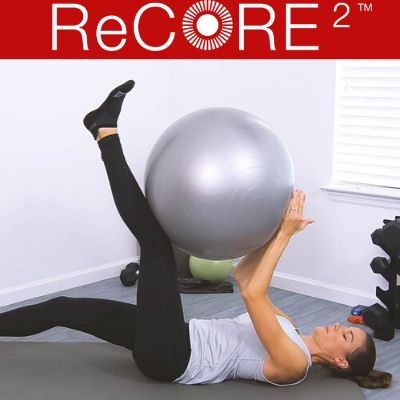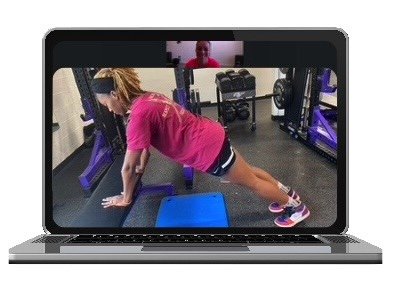How to Start your Postpartum Recovery! - Weeks 0-3 Post Birth

Getting Started
Before getting into specifics about movements and exercises- It is important to emphasize that giving birth is similar to a major athletic endurance event (though perhaps magnified many times) in regard to the musculoskeletal/physiological response and recovery required.
Your emphasis during the first few weeks postpartum should be similar to the first few weeks following a marathon- Resting, Refueling, and Rehydrating.
Understandably, it is EXTREMELY difficult to dedicate time and energy to your own needs when taking care of a newborn. When possible, enlist the help of willing family, friends and others around you to allow you to meet your body’s need to recover.
Let’s face it though… even early postpartum we have to lift and hold a baby, maybe pick up a toddler, squat and get up and down easily. There are some specific things you can do in the first few weeks postpartum (weeks 0-3) that will set you up for an easier recovery musculoskeletally and aid your return to normal activity/exercise. In this article we will go over: Easy Walking, Basic Strength Exercises, Gentle Mobility, and Abdominal Supports!
Please note that you do not have to do everything on this list, or complete every exercise every single day in order to recover. This is simply a guideline to be shaped to your personal health, energy levels, and abilities postpartum. There will be days you do nothing on this list, and that is totally normal and expected!
Exercise and Practices for your first three weeks postpartum
See list at the end of this article for postpartum books and research that are wonderful resources on how to progress postpartum exercise safely.
Easy Walking
Start in weeks 1-2. This is a great way to begin easy movement postpartum! Walks should start out very short and comfortable- begin with 5-10 minutes (and progress from there), you can get out multiple times a day if you feel up to it. Remember your purpose is gentle movement, not significantly pushing yourself. If you experience increased perineal bleeding or dizziness, you should scale these walks back.
Bonus points if you are able to walk outside, sunlight/natural light is a major boost for mental health!
Foundational Exercises
If anything causes pain or discomfort, stop and wait several more days to try that exercise again. These are meant to be gentle exercises to work on basic strength, coordination and mobility. If you feel like you are significantly pushing yourself you are doing too much!
Pelvic Floor Contraction/Relaxation
Start in weeks 0-2. Simply moving the muscles through their full range of motion is a great way to help wake them up. The pelvic floor experiences quite a bit of stretching and trauma throughout the birth process. As a result, there is significant loss of pelvic floor coordination, strength and control in the early postpartum period. You may have a hard time contracting or feeling these muscles to start, that’s ok, keep trying- you will see improvement as you heal! To start, practice simply contracting (lifting) and relaxing (lowering) your pelvic floor. Being able to relax the pelvic floor is just as important as being able to contract. It may help to try different body positions: laying on the floor with knees bent, sitting cross legged on the floor or sitting in a chair. Once you can feel these muscles contract and relax, here are a couple types of holds to try:
- Long Hold - Lift and hold a pelvic floor contraction for as long as you can, then fully relax. Work up to holding for 8-12 seconds.
- Quick Flicks - Practice a quick pelvic floor contraction and relaxation. See how many you can do in 10 seconds and work to improve.
- Negatives - Lift and hold a pelvic floor contraction for a few seconds, and then slowly relax contraction in degrees until you relax completely. Think of your pelvic floor like an elevator slowly going down floor by floor until it reaches the ground.
Diaphragmatic Breathing
Start in weeks 0-2. Diaphragmatic breathing is a powerhouse exercise! It gently works on core/ pelvic floor activation/coordination and helps restore full range of motion to the stretched out core muscles, while also helping to calm the nervous system and increase body awareness.
This can be done in any position but may be easiest to try laying down first. Lay on your back, with knees bent and feet on the floor. Place a hand on your belly to watch it’s movement. As you inhale, let your belly rise (chest may rise just slightly) and relax your core and pelvic floor. On your exhale, contract core down and contract (lift) pelvic floor- belly should lower. Repeat for several minutes.
- Diaphragmatic Breathing w/ Ab Sets - After a few days of performing basic diaphragmatic breathing, try adding a max isometric contraction after inhale for 3-5 seconds, before releasing with exhale.
Strength Exercises
Start in weeks 2-3. This is a great way to improve core control, muscular stiffness and endurance (gradually handle higher Intra-Abdominal Pressure).
Single Leg Slides w/ Max Isometric Hold
The key is to do a max isometric contraction on the exhale and slowly slide your heel along the smooth ground. Only go as far as you can without loosing core control and without letting your back arch! Stop in this position to inhale and relax core, and then exhale/contract with a max isometric contraction, then slowly draw your leg back to the starting position. If this feels easy, go ahead and try sliding both legs at the same time. Perform 3-5 reps.
Hip Openers
Start in weeks 2-3. This is a great exercise suggested by Emma Brockwell in her book “Why Did No One Tell Me?” (pg 266). (If you haven’t checked out this book, it is an invaluable postpartum resource!)
Lie on your back with knees bent. Inhale first to relax, then as you exhale and contract your core, leg one knee fall to the side. Don’t let your pelvis or other leg move! In this position, inhale to relax core, then exhale and engage core to draw knee back to start. Perform 3-5 reps.
Adduction Pillow Squeeze
Start in weeks 2-3. Lay on back with knees bent, feet on floor and a folded pillow between knees. Gently press knees together to squeeze pillow, and hold for 5 seconds before relaxing. Perform 3-5 reps.
Glute Bridge
Start in weeks 2-3. Lie on your back with knees bent, feet on floor. Squeeze glutes and lift abdomen into bridge position. Hold for 5 seconds, and then slowly lower to the ground. Perform 3-5 reps. Once comfortable with this, you can combine with adduction exercise, and squeeze pillow between knees while in bridge position!
Wall Squats
Start in Week 2-3. Squatting is an essential life movement, so it’s good to start early! Wall squats are a great way to slowly introduce increased intra-abdominal pressure demands and improve full body range of motion and leg strength. As long as you don’t feel heavy pelvic pressure or pain that increases with these, you can start doing repetitive (short) or isometric (longer) squat holds. Adjust squat depth according to strength, less deep will be easier. Perform 3-5 reps.
Gentle Mobility and Stretches
This mobility sequence targets some of the common tight muscles postpartum- back, neck, chest and hips. If any feel pain, or if movements aggravate symptoms- do not complete them.
Cat Cow
- Recommended For - Thoracic and pelvic mobility.
Book Opener Stretch
- Recommended For - Thoracic mobility.
Neck and Chest Stretches
- Neck Rotation- Side to Side (keep shoulders back)
- Neck Rotation- Up and Down (keep shoulders back)
- Lateral Bends
- Protraction and Retraction (chin is going forward and back, like a turtle 🙂)
- Chest and Back Stretch
- Chest Corner Stretch (combats hunched over posture)
Abdominal Support/Splint
Abdominal Supports can be helpful postpartum as it provides gentle compression to stretched out muscles as well as those with diastasis recti- while muscles heal and regain strength and stability. Wearing a gentle support can help align lateral sides of the abdominal muscles close together- which assists in tissue loading, as well as proprioceptive feedback (which can help with pressure management and muscle engagement). This recent study found improved trunk flexion strength and body image in postpartum women who completed abdominal binding and a core strength program, compared with those who only completed core strength. Elastic abdominal binders are not likely to increase intra abdominal pressure and as such will not cause or exacerbate pelvic floor symptoms (Keshwani, 2019).
It’s important to note, regaining core strength, stiffness and control will only improve with exercise, but wearing a support can be helpful in the early weeks postpartum. It is recommended to wear a flexible (not stiff) support postpartum for up to 4-6 weeks postpartum. The support can be worn for about 8 hours a day. After 6 weeks, if someone is still experiencing an abdominal gap of 3+ fingers, see a womens health professional for extended use. Supports should be used temporarily.
When purchasing an abdominal brace, you want something that is supportive, but in no way restrictive- it should not be stiff or feel like it is hard to breathe while wearing. The ReCORE PostNatal FITsplint is known for its flexible, comfortable, fully adjustable material. See the video below for best practices on how to wear your Postnatal FITsplint.
Our hope is that this gives you somewhere to start in the first few weeks postpartum!
Speed of progression varies with each person, but around week 4 is when we generally start adding more complex exercises to this list- including more range of motion, as well as strength and coordination challenges. We offer a self paced early postpartum strength program (ReCORE), and also online personalized training to help you return to lift, run, jump etc!
We also recommend scheduling a visit with a pelvic floor therapist when you can. This can sometimes be done in the first few weeks postpartum. Don’t wait until you are in pain to visit. While it should be standard care, Pelvic PTs are able to make sure healing is going well, assist with issues contracting or relaxing the pelvic floor and diagnose pelvic injuries.
Recommended Resources
| Resource | Author | Link |
|---|---|---|
| Returning to running postnatal–guidelines for medical, health and fitness professionals managing this population. | Goom, T., Donnelly, G., & Brockwell, E. (2019) | Link |
| Why did no one tell me?: What Every Woman Needs to Know to Protect, Heal and Nurture Her Body Through Motherhood | Emma Brockwell | Link |
| Go Ahead, Stop and Pee: Running During Pregnancy and Postpartum | Kate Mihevc Edwards, Blair Green | Link |
| The impact of exercise therapy and abdominal binding in the management of diastasis recti abdominis in the early post-partum period: A pilot randomized controlled trial. Physiotherapy Theory and Practice, 37(9), 1018–1033 | Keshwani, N., Mathur, S., & McLean, L. (2021) | Link |





















Aubree McLeod is an ACSM-EP exercise physiologist, researcher in running biomechanics. She has also completed the ICE Preg & PostPartum Course for athletes. She has an M.S. in Exercise Science and has worked in a variety of spaces within the exercise science field including physical therapy, education, research, and run coaching for... Read More